Back at the beginning of 2010, Google felt quite confident that its Android platform would crush Apple's iPhone in the same way Microsoft Windows had marginalized Mac sales into relative obscurity with 2 percent market share in the late 1990s. However, Apple changed the game by launching another new iOS product: iPad. It split Google's focus and demonstrated that Android as a platform couldn't turn a bunch of commodity PC and phone makers into an innovative, creative challenge to Apple. Eight years later, Google appears ready to give up on tablets entirely.
Google's upcoming Android P release drops support for Pixel C, the company's last effort at building an Android tablet. While it once appeared that Google wanted to ditch Android and move to its web browser based ChromeOS, the termination of its last Android tablet follows Google's discontinuation last summer of Chromebook Pixel, the premium-priced laptop running ChromeOS.Google failed to make a dent in Apple's iPad business despite trying longer and harder than Microsoft's Zune attempt to rival iPods
Android P also drops support for all remaining Nexus branded devices. In fact, the next Android release only supports Google's last two batches of Pixel phones— which themselves did not sell well— indicating a rather dramatic scaling back of what was once supposed to be a vast array of hardware expanding into new directions to tackle Apple at every turn.
While things like Chromebooks and Nexus Player TV boxes were launched as experiments, Google's efforts to build a self-branded tablet (both to rival Apple's iPad and to show its own Android licensees how to build a good tablet) was always presented as a serious, strategic effort to conquer Apple's second largest iOS franchise.
Here's a look at why Google failed to make a dent in Apple's iPad business despite trying longer and harder than Microsoft's Zune attempt to rival iPods.
Pre iPad: the doe-eyed Android Honeymoon
By the time Steve Jobs appeared on stage in early 2010 to debut Apple's new iPad for Post PC computing, Google had yet to deliver a big hardware flop. Android had only just made its mainstream appearance a little over a year earlier on the HTC-built T-Mobile G1. There was nothing but bold teenage optimism surrounding Android's adolescence; Google felt fearlessly bulletproof despite the awkwardness and blemishes that were occurring as Android began to mature. Everything looked rosy.
Across 2009, a series of other phone makers had introduced their own new Android-based handsets working across a range of mobile carriers, representing a promise to deliver a wide set of open, configurable and innovative new form and feature ideas in contrast to Apple's singular iconic iPhone that only worked on GSM networks, including its exclusive availability on AT&T in the U.S.
All of the established vendors that had been lined up behind Microsoft's struggling Windows Mobile platform seemed willing to try using Android. In fact, Google's first partner HTC had previously been building the majority of all Windows Mobile phones. It was like a nerd fantasy come true: the Year of Linux on the Desktop PC had never quite made it out of the dream stage, but here was Google putting its weight behind an open development platform running Linux on a critical mass of mobile devices!
iPad disrupts the party
Apple's new iPad suddenly confused everything. For some Mac users, it didn't seem like it could be powerful enough to serve as a computer. Market researchers immediately branded it as a "media consumption device" in a desperate effort to avoid any comparison with PC sales and to disavow any potential for it disrupting sales of Windows PCs, despite their having spent the previous couple years preaching the gospel that cheap, ultralow-end netbook PCs would certainly eat up sales of Macs.
Yet despite waves of media contempt citing certain users' disgruntlement, a deluge of market research white papers explaining that iPad wasn't a real computer, and thunderous umbrage from Adobe expressing outrage over iPad's lack of support for its proprietary Flash content (all of which sounded virtually identical to the themes in this year's launch of HomePod), real world users voted for iPad with their billions of dollars.
By the end of 2010, Apple had sold nearly 14 million iPads at around $500 each in just three quarters. That's three times as many "what's it for?" tablets as Google was able to sell in Pixel smartphones in all of last year. It was also more tablets than Microsoft's Tablet PC initiative had ever sold over the past decade of trying to deliver Bill Gates' fantasy of a Windows laptop with a pen, itself a suspicious copy of Apple's original Newton MessagePad from 1994 (which also didn't find any critical mass of buyers).By the end of 2010, Apple had sold nearly 14 million iPads at around $500 each
But somehow, iPad sales were happening and were clearly accelerating, inducing a demand for tablet-specific iPad apps. The next year Apple would sell 40 million tablets, beyond even the most optimistic projections.
Everyone wanted in on this action. Microsoft had already rushed out a Slate PC flop with HP and was scrambling to scale out of that pit. It would be another two years before Microsoft introduced Surface RT, its next tablet category flop.
It wasn't just Microsoft that was scrambling. Palm, which had seen its own Palm OS handsets similarly embarrassed by the iPhone, had rushed together a new webOS platform, paired with a flagship Pre phone that itself was flailing in the market. And now iPad was gaining attention. HP attempted to reverse its Slate PC embarrassment by acquiring Palm and turning its software into a TouchPad iPad rival, but that didn't work out either.
Blackberry similarly rushed together a new BB10 platform it expected to rival iPad. In fact, rather than focusing on making it work on a handset, BlackBerry debuted it first on the PlayBook, a mini tablet it hoped to sell to businesses before Apple could take over the category.
2011: Google launches Android Honeycomb tablets from major partners
Google, with all the confidence of Android's initial, surprising two years of handset growth from virtually zero, similarly rushed together a tablet platform it expected to similarly power a range of third-party devices.
That effort was launched in 2011 with Android 3.0 Honeycomb, a release that (similar to BB10) delayed Android's smartphone updates in order to attack Apple's brand new iPad growth and the emergence of tablet-optimized apps.
Strangely enough, however, Google's Honeycomb tablets copied more of the losing strategies of Windows Tablet PC rather than following the successful route Apple had pioneered for iPad.
After third-party Android Honeycomb tablets from HP, Samsung and Motorola all embarrassingly flopped in the market, Google decided it would have to show its licensees how to build Android tablets the same way it had previously launched its own Nexus-branded handsets aimed at delivering its Pure Android vision of what a smartphone should be.
At the same time, Google's hubris that allowed it to launch Honeycomb as unfinished software running on unfinished hardware also prompted it to prematurely launch Android@Home, a home automation project it billed as "the operating system for your home," at least until it canceled it the next year. Google was rapidly burning up any reputation for understanding the market and competently partnering with third parties to deliver unintegrated products that were superior to what Apple's closed development structure was creating
The previous fall it had also launched Google TV, an Android-based TV platform featuring Google Chrome browser, in partnership with Sony and Logitech hardware. It aimed to muscle into set top box market of Apple TV. It too failed so miserably it nearly put Logitech out of business.
Even so, at the end of 2011, Google's then Chairman Eric Schmidt unrealistically bragged, "by the summer of 2012, the majority of the televisions you see in stores will have Google TV embedded in it."
Google was rapidly burning up any reputation for understanding the market and competently partnering with third parties to deliver unintegrated products that were superior to what Apple's closed development structure was creating.
It was also becoming increasingly clear that Apple's integration and limited focus— its ability to say no— was enabling it to deliver a few very strong hits, in contrast to the broad, unfocused scattershot of flops Google was blowing out.
2012: Google Nexus 7 flubs its cheap tablet trick
In 2012 Google introduced its first self-branded model of what it though tablet buyers wanted in the Asus-built Nexus 7, a very low-priced mini tablet. The "Pure Android" tablet incorporated support for various Google strategies of the day including Google Wallet's NFC (but not functional Bluetooth 4, as Apple had started supporting in 2011), and Google Now, the company's answer to Siri.
The tablet won many awards and critic recommendations, but was poorly built and riddled with problems that rendered it completely defective for many users within the first year.
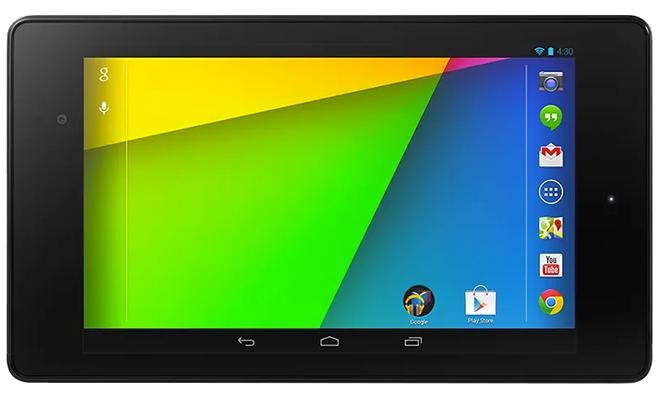 Despite eggregious software flaws and hardware problems, two generations of Nexus 7 were praised for being crazy cheap
Despite eggregious software flaws and hardware problems, two generations of Nexus 7 were praised for being crazy cheapThe next year Google introduced a refreshed Nexus 7, but it too was plagued with a variety of serious issues. Reports of "faulty" GPS, "buggy" multitouch, "jittery" scrolling and an ecosystem that "still lags iOS" weren't enough to stop Google's refreshed Nexus 7 from getting a stellar review from the Verge on par with Apple's iPad mini. Joshua Topolsky actually wrote that "Google's Nexus 7 isn't just an excellent tablet for $200. It's an excellent tablet, period," despite the tablet being just as much of a turd as its predecessor.
2014: Google Nexus 9 copies iPad mini at a premium price
In 2014 Google dropped its low-cost, mini tablet strategy entirely and produced a product virtually identical to Apple's iPad mini, at a similarly premium price. The Nexus 9 puzzled Android pundits who had been promoting the idea that Google's low-end, cheap hardware was a great deal for buyers, and that being different from Apple was an advantage, not a liability.
Part of the allure of the HTC-built Nexus 9 was its use of the NVIDIA "Denver" Tegra K1 chip. It had been the subject of much hype, particularly since Apple had been leapfrogging other vendors in the mobile processor arena. Yet despite lofty expectations, the K1-driven Nexus 9 fell behind Apple's A8X-powered iPad Air 2, even before considering that there were really not many tablet-optimized apps the Nexus 9 could run.
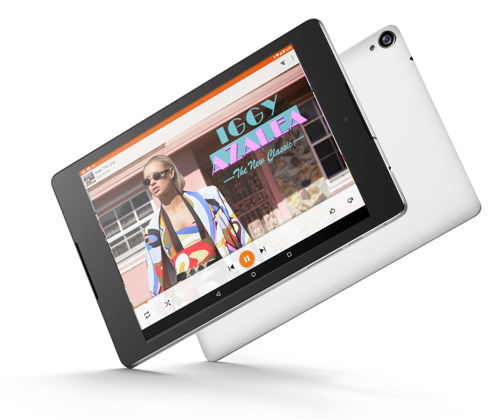 Google's HTC-built Nexus 9 shifted gears to copy Apple's iPad mini size and display ratio, with a similar price
Google's HTC-built Nexus 9 shifted gears to copy Apple's iPad mini size and display ratio, with a similar priceThe commercially insignificant numbers of tablets Google was able to sell using its own Nexus branding were not going to singlehandedly fund the development of mobile tablet processors. Apple was selling $30 billion of iPads every year, making it very worthwhile to drive the expensive, custom development of high-end A-series chips. Apple was also sharing its development costs for iPad chips with mass volumes of iPhone sales.
Neither Google nor NVIDIA were selling large volumes of tablets or phones; NVIDIA had even pulled out of building chips for the smartphone market entirely, greatly reducing the addressable market for amortizing the expense of developing new Tegra chips.
2015: Google gives Android tablets a last shot with Pixel C
Nexus 9 was a poor seller and was discontinued in a year and a half as Google switched its focus to a new product at the end of 2015: Pixel C. Rather than copying iPad mini, the Pixel C took aim at Apple's full-sized, more expensive iPad Air 2, demanding a similar premium price and again confounding the media narrative that Google was graciously supporting Android just to give everyone nearly free things.
Despite being priced like an iPad, Pixel C was hobbled by Android's poor support for tablet hardware and the platform's paltry pickings for tablet-optimized apps. It too was a poor seller, doing nothing for NVIDIA's latest X1 chip.
In 2016, Google moved its house-branded smartphones from the Nexus name to Pixel, after dumping its Nexus 9 tablet and the short-lived Nexus Player set top box. But it did not introduce new Pixel C tablet hardware. Last year, Pixel phones were again refreshed without a tablet partner.
When Google released Android Oreo last year, it introduced "Treble" a new OS feature that draws a separation between the low-level drivers related to fragmented hardware and the core OS above it. This modular design makes it easier to update higher level Android software across a wider range of devices. However, this requires support from hardware makers to enable Treble on their hardware.
Notably, Google did not support Treble on the Nexus 5x, 6P or Pixel C, a hint that indicated that it didn't plan to continue supporting its products, even after building the mechanism to do this. With Android P, Google is now wiping away any memory of the failed stabs Google took at selling tablets.
Android's bleak tablet future
Google's failure to sell tablets isn't just the fault of lacking Apple's scale or relying on third parties to build its processors and to develop the outline of its hardware. It has also failed to develop a market for tablet-specific Android apps, instead relying on developers to simply stretch their smartphone apps into tablet-sized screens. That strategy was already an obvious problem back in the days of Nexus 7 hardware, when the cheapness of the device allowed buyers to shrug off its limited utility.
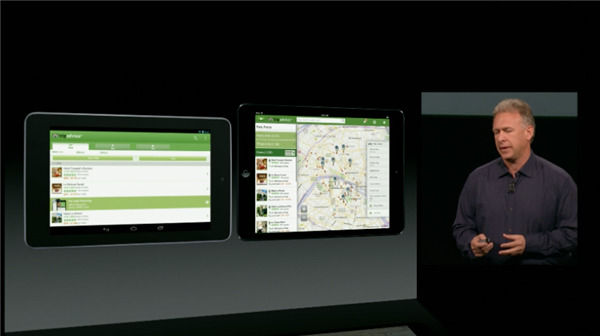 Apple's Phil Schiller depicts the difference between iPad-optimized apps and stretched Android phone apps on a tablet
Apple's Phil Schiller depicts the difference between iPad-optimized apps and stretched Android phone apps on a tabletHowever, as Google has resorted to charging Apple-like prices, buyers' expectations have risen dramatically. Google's lack of investment in high performance processors, in tablet apps and in other areas (such as support for the needs of enterprise users) has neutered its potential for jumping back into the game in the future.
And without any first-hand experience in building its own tablets going forward, it's unclear how Google will be able to support licensees in building Android tablets that can compete against Apple's iPad and iPad Pro, particularly in targeting professionals and the enterprise, given how poorly Samsung, HTC, Acer and others have been at producing profitable, attractive tablets even with the help of Google and Microsoft.
Last fall Google unveiled its Pixelbook, a $1,000 conventional Intel Core i5-based notebook running ChromeOS, with a stylus but no tablet functionality. It faces competition from Microsoft Surface line and a range of other PCs, as well as Apple's iPads and MacBooks. Yet the majority of established PC makers are stuck at low product volumes. Despite all the press it gets, Surface sells in minor volumes significantly below Apple Watch, and the PC industry has not been growing for several years.
In contrast to flat and falling PCs and generic tablets, Apple's iPad sales are growing. In the last quarter, it earned $5.8 billion selling just over 13 million units. Across 2017 it sold 43.8 million (in IDC figures), putting it in first place globally and making iPads a quarter of all tablet devices sold— even when mixing in "detachables" and "slates." Google can deny it has given up on tablets, but imagine the headlines if Apple discontinued all of its iPads and stopped supporting them in the next iOS
Samsung shipped just over half as many tablets, but its sales have slipped significantly year-over-year as Apple's have grown. The third largest tablet shipper is Amazon, which shipped 16.7 million tablets last year, largely as loss leaders to drive shopping in parallel with Alexa Echo hardware.
The top two Android tablet vendors are notable in that they are bucking Google's control of the Android platform. Amazon tablets run a different Android fork called FireOS that doesn't bundle Google services and has its own browser.
Google may try to start over in tablets using ChromeOS, a platform that hasn't done anything outside of acting as a loss leader in U.S. education. But at this point, it's been over two years since Google even introduced a new tablet of its own, and its last Pixel C was discontinued in December. Google can deny it has given up on tablets, but imagine the headlines if Apple discontinued all of its iPads and stopped supporting them in the next iOS.
Quite incredibly, Google tablets have clearly gone the way of Google TV, Google Glass, Chromebook Pixel, Nexus Player and Android Wear.
 Daniel Eran Dilger
Daniel Eran Dilger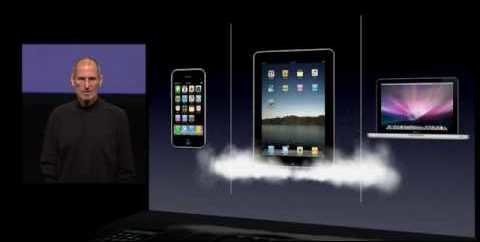


-m.jpg)






 Marko Zivkovic
Marko Zivkovic
 Mike Wuerthele
Mike Wuerthele
 Christine McKee
Christine McKee
 Amber Neely
Amber Neely
 Wesley Hilliard
Wesley Hilliard

 William Gallagher
William Gallagher


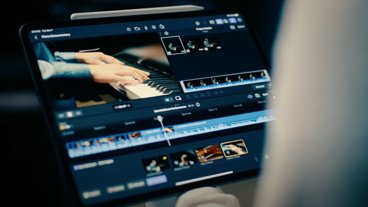







84 Comments
When Apple has grown even more, and plays the endgame of ‘winner takes al’, and the very ethical Tim Cook has retired, what will this humongous organization do with all its power? Whenever I buy Apple stuff, and I really own a lot these days, this question haunts me at night.
Another point many forget is how every pundit and their grandmother was deriding the iPad for having a 4:3 aspect ratio. How it was not great for viewing movies etc.
Now all you get is crickets chirping when asked about Android and Windows tablet aspect ratio. Guess it’s natural evolution or something.
For a good laugh, try reading this little gem I came across, explaining why Android makers switched to 4:3 ratio. Do this away from any hot liquids like coffee or tea.
http://www.tested.com/tech/android/467213-why-android-tablets-are-finally-going-43-screen-ratios/
From the article.
Now try not to laugh.
Google/Android lacks corporate direction, they lack leadership. This article sums it up perfectly. They are always looking to play catch up, to try to find something that can fill the gap between them and a competitor, and they are quick to sell something and then drop it. I posted a few weeks ago about firing up my iPhone 4S for the first time in years. After updating to iOS9 it flies around apps on wifi pretty quickly, I was amazed. Gave it to my 6 year old to play on. he also has my old original iPad Mini that he still plays games like Madden 17 and streams youtube Kids on without a problem. I didn't expect the ipad to last this long and didn't figure my phone would be able to run any apps. But they are both there and I can get around it just as simply as I can my newer everyday phone.
tl;dr...Apple shows that you can invest your money in them and they will build on what you bought. You won't lose support or focus in 2 years and have to toss it.
Apples handhelds are so darn good.
We have two iPad mini's (the first with Retina, whenever that was). They're going strong, no issues, daily use (by kids), good battery life still. Never even a screen-stutter.
Actually we've worn out the smart covers while the hardware is still near-perfect! Just realized that, wow. What does THAT say?
We recently bought the $329 iPad. It's SO NICE that for $329 we feel like we stole it, and it's not even the best one!
Offering that model for $329 is super generous in my opinion. Could've easily been $379, which is a big difference mentally.
And we now have an old super-beater iPad 2 that a friend recently gave us. Even though it struggles at times rendering the graphics in our "Clash of Clans" game and can crash Safari at times (its two only uses), I see that as testimony of how LONG these iPads last; that it still mostly-works with X-years-future Apps. The multi-touch is still flawless, and rendering issues in a game shows how far the GAME has progressed over the years (way more complex now). Reasonable battery life too, for its age.
There are great products.